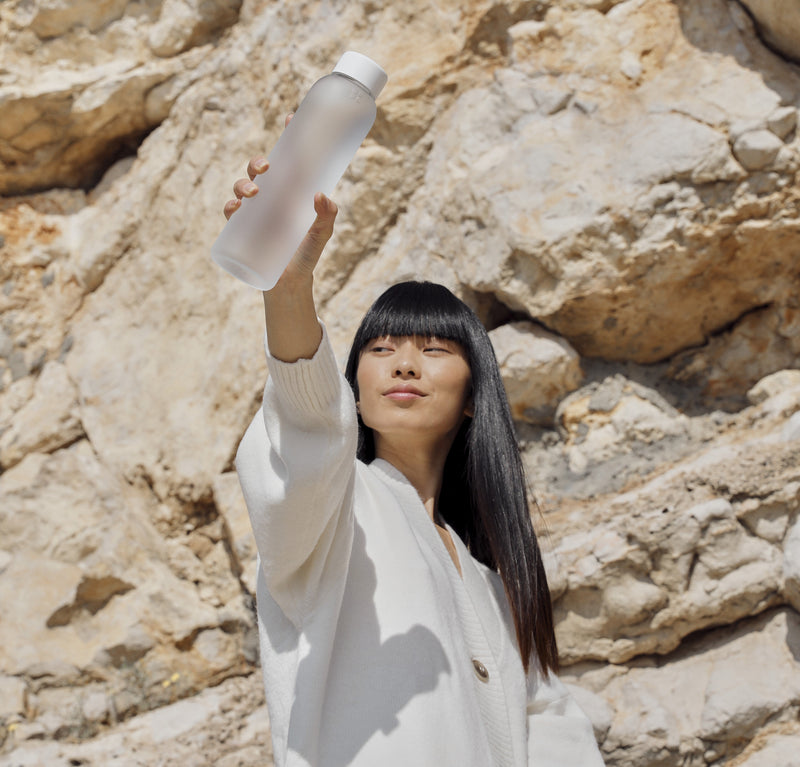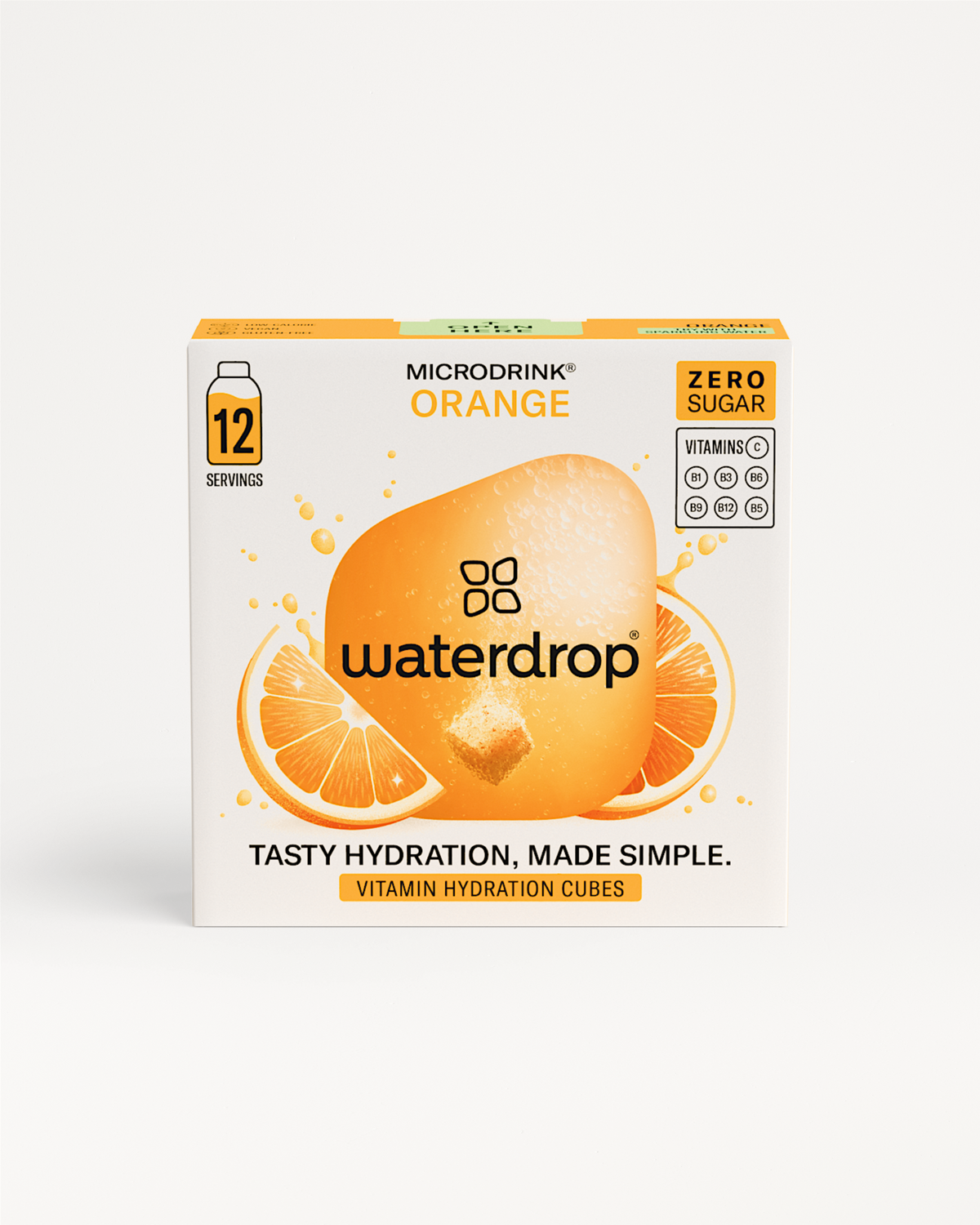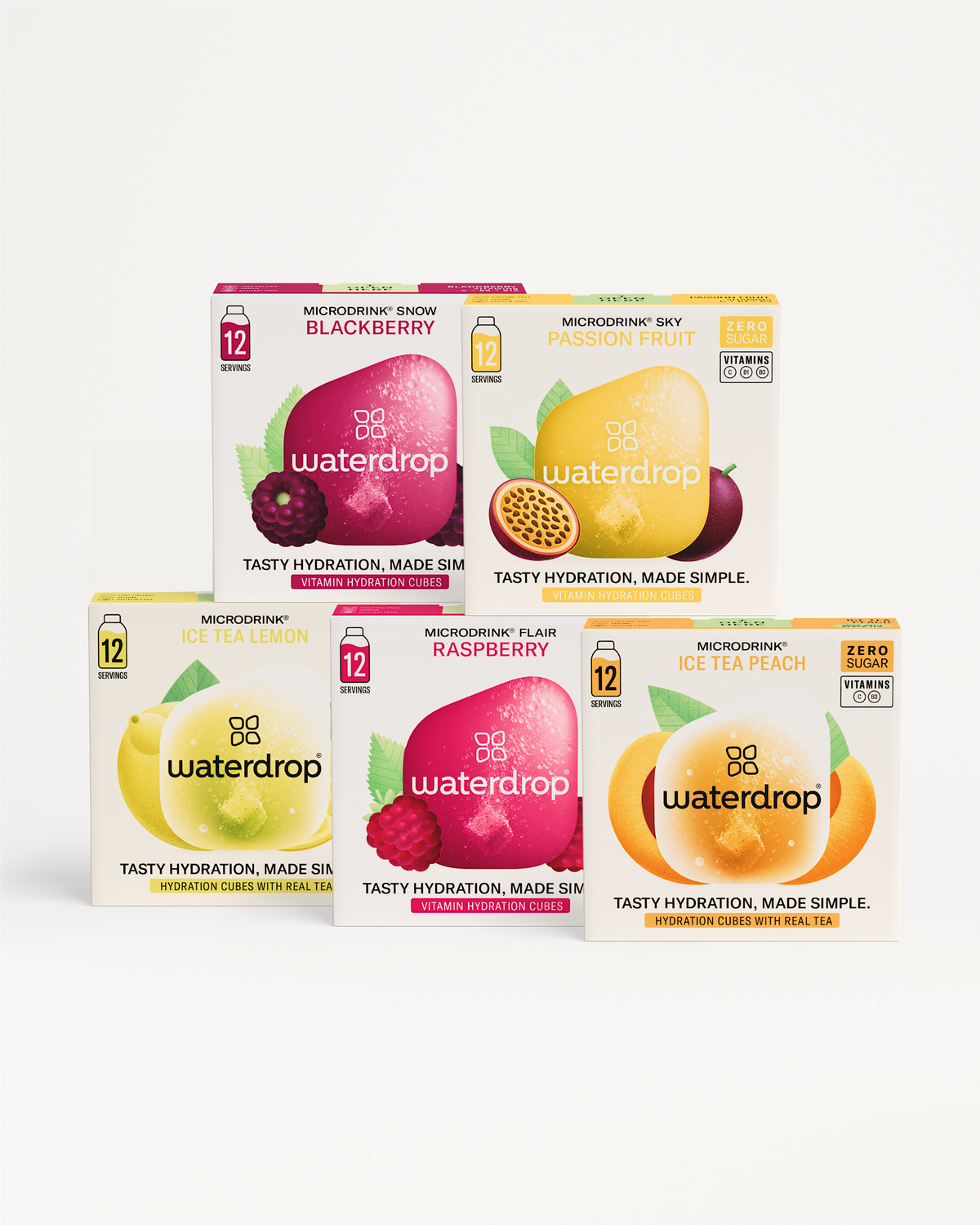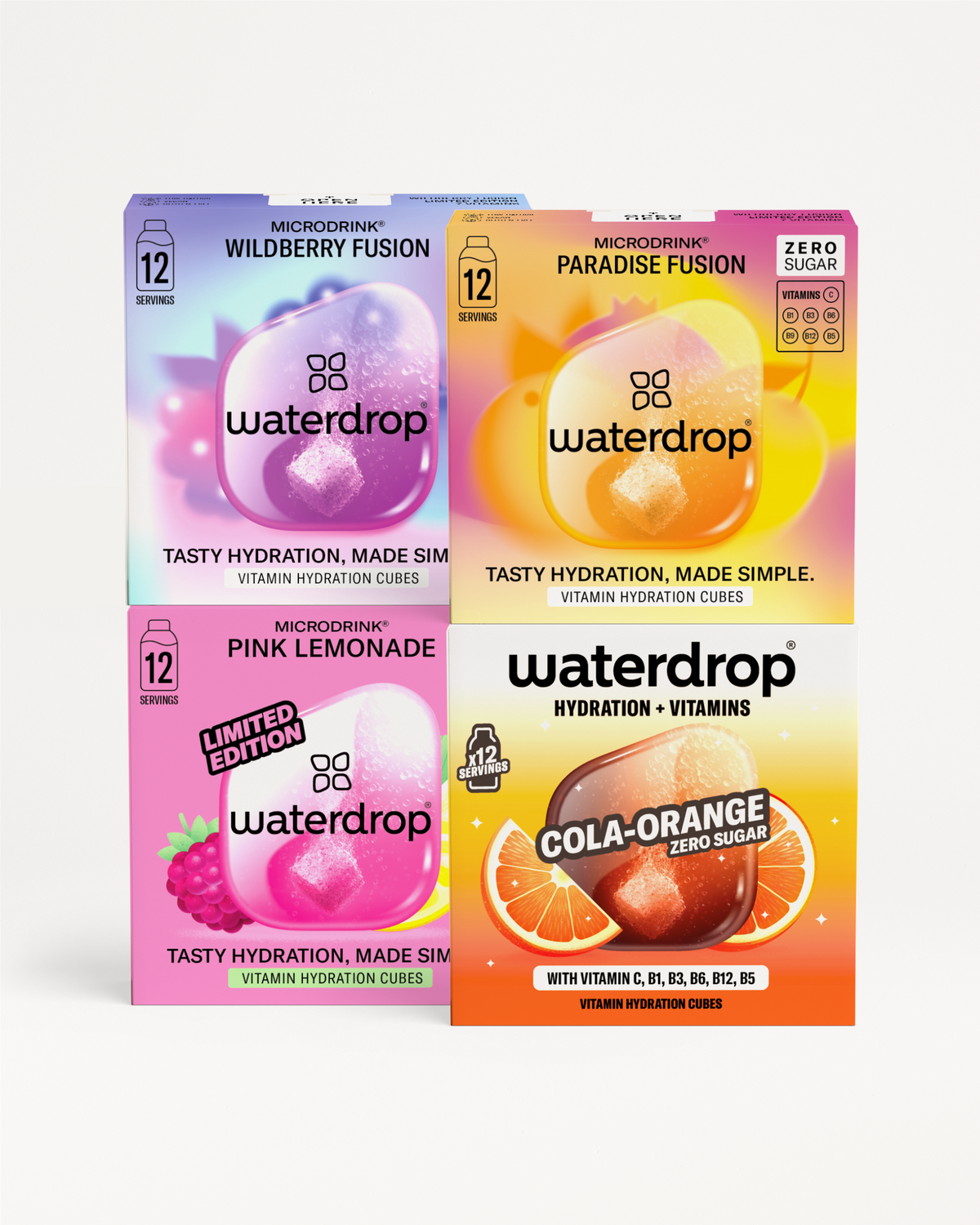
With more than 10 million happy customers all around the world, the demand for our fruity little cubes has grown exponentially since we first embarked on our hydration mission. And yet, our vision and mission has remained the same as it was on Day 1 – to make hydration easy, delicious and most importantly, sustainable for everyone.
With approximately 700,000 hydration cubes in all flavours and functions churned out daily, it is more important than ever that sustainability remains at the forefront of all our decision-making. To find out more about how we uphold sustainability standards in Production, we sat down with COO Christoph Hermann (CH) and Chief Supply Chain Officer Sebastian Heinrich (SH) to talk about how we meet the needs of the present without compromising on our beliefs.
So first up, the question that we’ve heard 2019384756 times from our beloved community: why did you choose to go with plastic blisters even though you believe in a world free of plastic bottles?
SH: Well, let’s just say we really tried. However, bearing in mind that the natural ingredients such as extracts and vitamins need to be properly protected from environmental factors e.g. moisture, we knew from the beginning that there was no alternative packaging solution – not invented yet, anyway! However, it’s important to note that not all plastics are created equal. Having weighed all the options, we went for polypropylene as it demands less energy production-wise compared to other plastics and is easiest to recycle. Each PP blister can be recycled up to 4 times, making it the most eco-friendly choice of all plastics.
CH: It’s also important to highlight that while we are not yet plastic-free, we are making great strides towards minimising the amount of plastic bottles. Each 12-Pack bought by a customer, replaces approximately 12 bottles of drinks they would have bought elsewhere. And the amount of plastic needed for a single 12-Pack is just slightly larger than a bottle cap (1 bottle cap = 10 waterdrop® blisters). So, while we cannot truly say we are plastic-free, we are proud that we are helping to reduce the demand for plastic with our cubes and we think that’s a pretty good place to start. You have to start somewhere, right?
How do you ensure sustainability is maintained in the entire production process?
SH: As our Microdrinks are produced with a focus on sustainability, our manufacturing and packaging processes primarily rely on renewable energy sources, using energy-efficient technologies when applicable. Whatever we don’t end up using i.e. production waste, is always recycled. We also use CO2 efficient pellet heating for production halls and energy recovery systems where possible. As our product is lightweight in nature, CO2 emissions are significantly reduced during transportation (as compared to the transportation of conventional 500ml PET bottles).
Do you have any special measures with regards to your ingredients?
CH: We try to use only natural resources as ingredients wherever possible. Although our product is already very lightweight, we have also tried to make the process more eco-friendly by doing things locally as much as we can. One thing that we’ve always done from the beginning is to dry the fruit or plant on-site. By harvesting and drying it on-site, we are able to reduce the ingredient to a sixth of its original weight and this keeps our CO2 footprint for transportation to a minimum.
Once the dried ingredients arrive at the facilities, they are then refined further by gently simmering at a very low temperature. This steam is then made into a powder so the final product is a very concentrated essence of the original ingredient, but only a 28th of its initial weight.
Will waterdrop® always be packaged in plastic blisters? Are there any other alternatives you haven't tried?
SH: We are always trying to enhance our products – not only its flavours, but also its packaging. Approximately two years ago, we initiated the development of an even more sustainable packaging solution. However, as you probably know, our cubes are free of preservatives and to have something completely protect it from external influences is hard to achieve without plastic. Not having it completely sealed off would also mean a shorter shelf life, and that’s not being environmentally savvy either. As our criteria for this packaging is set very high, it might take some time before we can incorporate it into our product lineup.
What do you do with the used blisters your customers return to stores?
SH: We are currently working on cool new products which will be made out of recycled blisters but unfortunately, that’s as much as I can say for now. You’ll just have to stay tuned and find out more!



























